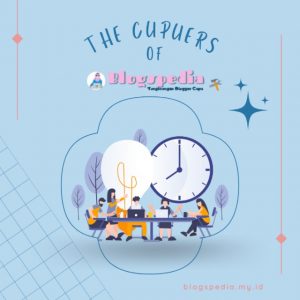Hello, Fellow Teachers, have you ever heard about the 5E instructional model? Last week, I got the opportunity to learn about it from Ferenc Kelemen, a Hungarian educator, as a part of the Development of Teaching Proficiency Webinar Series I attended on December 21st-23rd, 2020. I would like to share with you a bit of what I understand from the session. Hopefully I can implement what I learned in the incoming semester.
The 5E Instructional Model
The 5E instructional model consists of five stages that the name starts with the letter E: Engage, Explore, Explain, Elaborate, and Evaluate. These five stages are actually a cycle, which means, you start with Engage and finish one cycle with Evaluate, but after that you will start a new cycle starting with Engage.
I will try to explain what I understand from each stage one by one. For each stage, we will have the aims, the task sequence, and the task types. Let’s start with Engage.
Stage 1: Engage
Engage is a stage that aims to generate the students’ interest so that they are motivated in learning the topic. The task sequence is priming. What is priming? Priming refers to preparing a student before the actual main material. What comes to my mind is that it is like preparing the stage before the singer could sing. We need to get students ready for the main topic. Students need to know some background knowledge before learning something new. It includes revision of what they already learned from the previous topic, giving pre-teaching, and modeling or giving examples of what students will do in this stage.
You can initiate discussion with students, watch a video or listen to a podcast with students, then formulate what questions they want to answer at the end of the topic.
 |
| Webinar I attendend (source: educamp.co.id) |
Stage 2: Explore
The next stage after students’ interest on the topic has arisen is to explore more about the topic. The students are given a task, individual or in group, to find more resources about the topic. They will work independently. Teacher will not be in the middle of the classroom explaining everything, but you will move around to guide the students and encourage them.
Because the teacher is not directly involved in the activity here, it is very important for the teacher to prepare a clear instruction. It can be given as a form of a worksheet or task guide, in addition to giving the instruction verbally.
This stage looks simple, but it is important for students to improve their critical thinking. In finding the resources, they need to evaluate each of the resources they found. Is the information they get relevant? Coming from a trusted source? Is it true? Is it important?
As the output, the students will need to compile the information they got into a format they choose. The teacher can instruct them to create a presentation, or design an infographics, or make a Google Site or a blog (Can you see why teachers should blog?), or let the student choose from several options.
Stage 3: Explain
After the students collect their information, they will share their findings with their classmates. The task types that can be given at this stage include doing a presentation, having discussion about the presentation, Q & A session between students, not to forget taking note of what is explained by their peers. Teacher will be acting as the moderator, chairing the discussion, asking for clarification, or adding some information if there are missing parts in the student's explanation. You need to be careful, though. Make sure students already know how to do presentations or take notes from a discussion, so that this stage can run well. You can give examples or small training before they start.
At this stage, the major principles in your topics should already be covered.
 |
| 5E Instructional Model Cycle |
Stage 4: Elaborate
The aim of this stage is for students to apply the new knowledge they acquired from the previous stages. They will create a new outcome set from what they already learned after the discussions.They can create new curated content or use curation tools. What comes to my mind is, if offline learning is possible, students can also be assign some space in the class wall magazine and curate their findings there.
Again, they will work individually here. As a teacher, you will monitor, observe, and assist them. Give them advice or remind them if there is something missing.
The last stage is to evaluate. But here, it doesn’t have to be the teacher to do the evaluation. It can be students’ self reflection or peer reflection. They can do listings of what they are already able of or what they still cannot do. You can ask them to draw a conclusion of what they have already done. They can compare their work with others’ and discuss it. Then, ask them to set a new objective for their next learning cycle.
As for the teacher, you give praises for their work, provide them with feedback, and highlight their progress.
What is important is how students can make progress in their learning. And we, as their teacher, need to give them affirmation. The 5E instructional model might be only one out of many other models. I hope this post is useful for you. Feel free to comment below to tell us about your teaching experiences. Which model works? Which one is not? See you again in the next post.
Stage 5: Evaluate
The last stage is to evaluate. But here, it doesn’t have to be the teacher to do the evaluation. It can be students’ self reflection or peer reflection. They can do listings of what they are already able of or what they still cannot do. You can ask them to draw a conclusion of what they have already done. They can compare their work with others’ and discuss it. Then, ask them to set a new objective for their next learning cycle.
As for the teacher, you give praises for their work, provide them with feedback, and highlight their progress.
What is important is how students can make progress in their learning. And we, as their teacher, need to give them affirmation. The 5E instructional model might be only one out of many other models. I hope this post is useful for you. Feel free to comment below to tell us about your teaching experiences. Which model works? Which one is not? See you again in the next post.














Lebih kurang sama dengan kurikulum nasional ya mba. Saya sering merasa kesulitan di bagian explain mba. Seringnya siswa memberikan hasil atau jawaban yang sama..
ReplyDeleteStage 1 ini jadi salah satu yang terpenting buat jadi pondasi yah Mba
ReplyDeleteThank's for sharing this model! Di bagian explain sepertinya benar2 butuh effort agar sesuai dengan tujuan dari model pembelajaran ini.
ReplyDelete